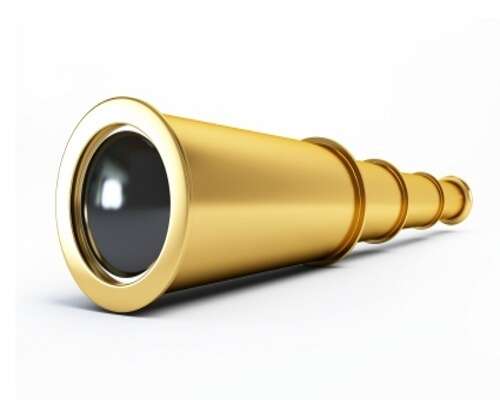
Indian Automobile Industry is in the growth phase and the Indian auto market is still untapped with the majority of the people in the country not owning a four wheeler. Also even with those who own cars – the trend suggests that people tend to shift cars every 4-7 years of owning a car with evolving technology and new brands holding better promise and appeal.
From a humble beginning in 1940, the Indian auto sector has now become the ninth largest market in the world. It is also Asia’s fourth largest exporter of cars (the top three spots went to Japan, South Korea and Thailand).
FY10 – strong year
As per SIAM, during April March 2010, production saw a growth of nearly 26% YoY. Passenger vehicles production crossed 2 million showing a growth of 26% and two wheelers production crossed 10 million thus reporting a growth of 26%. The passenger cars saw a 25% YoY jump. The utility vehicles reported a 21% rise and Multi Purpose Vehicles grew by 41 percent in this period.
Auto loan growth was not way behind. For the year, the growth was recorded at 18% higher at Rs 33,000 crore, compared with Rs 28,000 crore in the previous year. Reduction in the excise duty across all categories by 4% at the beginning of 2009, coupled with interest rates of 10-11% during 2009-10 (lower than that of 13-14 per cent in 2008-09) were the main factors for growth.
What is in store for 2010?
As per Fitch, the Indian auto industry is likely to see a growth of 10-12% in sales in 2010. This is lower than last year mainly due to higher base and also due to increase in excise duty by 2% during the budget coupled with rising commodity prices and higher interest rates. In March, ICICI Bank and HDFC Bank announced an increase of 25 to 50 basis points more for auto loans. For ICICI Bank, auto loans up to 35 months will now cost 9 to 13%. Loans for 36 to 60 months will cost 8.75 to 12.5 per cent. For HDFC Bank, the rates will be 7.5 to 15.5 per cent, depending on the tenure and vehicle segment.
The RBI on 20th April took a hike on 25 bps hike, each in repo, reverse repo and CRR which might increase the borrowing cost for car buyers eventually.
New entrants
There are many players waiting to enter India. Given below is a list of some of them.
New entrants list 2010-11
Rule of thumb for segmentation we could use is:
Small or Compact car (needs satisfied in small budget)
Price band: 2-3.5 Lakh
Some Indian models: M800, Alto, Indica, Spark, Santro, i10 (basic), A-star
Premium compact car (needs satisfied in larger budget)
Price band: 3.5 Lakh-6 Lakh
Some Indian models: Getz, Swift, Ritz, Estilo, Palio, i10, i20, Wagon R, Fabia, Fiat Punto
Super premium compact car:
Price band: Above 6 Lakhs
Some Indian models: Jazz
Entry level Saloon (Big car at entry level prices)
Price band: 4.5 Lakh-6 Lakh
Some Indian models: Fusion, Ikon, Accent, Logan, Swift Dzire, Indigo, Indigo marina
Mid segment Saloon (Big car at medium prices)
Price band: 6-10 Lakhs
Some Indian models: Linea, Fiesta, Optra, City, Verna, SX4, Cedia, Lancer, SR-V
Luxury Saloon (Big cars at big prices)
Price band: 11 Lakhs-25 lakhs
Some Indian Models: Accord, Civic, Sonata, Laura, Superb, Octavia, Corolla Altis, VW Jetta
Premium/Super Luxury (Real big price, Luxury. Period)
Price band: 30 lakhs-50 lakhs
Some Indian Models: Audi-A4, A6, Q5. | BMW-3 series, 5 series | Mercedes Benz-C-class, E-class
Porsche-Cayman, Passat | Volvo- S80
Sports utility vehicle (Big money, big thrill)
Price Band: 10-50 lakh
Some Indian models: BMW-X3, Endeavour, Captiva, CR-V, Tucson, Merc-M class, Nissan X-trail, Outlander, Pajero, Montero, Land Cruiser, XC90
Multi-utility vehicles (Big on work, ok on price)
Price band: 2-25 lakh
Some Indian models: Omni, Tavera, Bolero, Getaway, Xylo, Scorpio, Versa, Rhino, Safari, Sumo Victa, Sumo Grande, Xenon, Innova.
*** This article has not included cars in the above 50 lakh segment and there is no unique way to segment them.
Indian Automobile Industry is in the growth phase and the Indian auto market is still untapped with the majority of the people in the country not owning a four wheeler. Also even with those who own cars – the trend suggests that people tend to shift cars every 4-7 years of owning a car with evolving technology and new brands holding better promise and appeal.
There is a lot of scope for both two wheelers and four wheelers due to development in infrastructure and thrust on rural areas. The increasing income and rising consumerism, provides a huge potential for the sector provided the conditions are favourable in terms of price and borrowing costs. It is expected that by 2016 Indian Industry will be among the world’s 7 largest manufacturers in all sections.
Get the best deals on loan offers
Some useful personal finance calculators